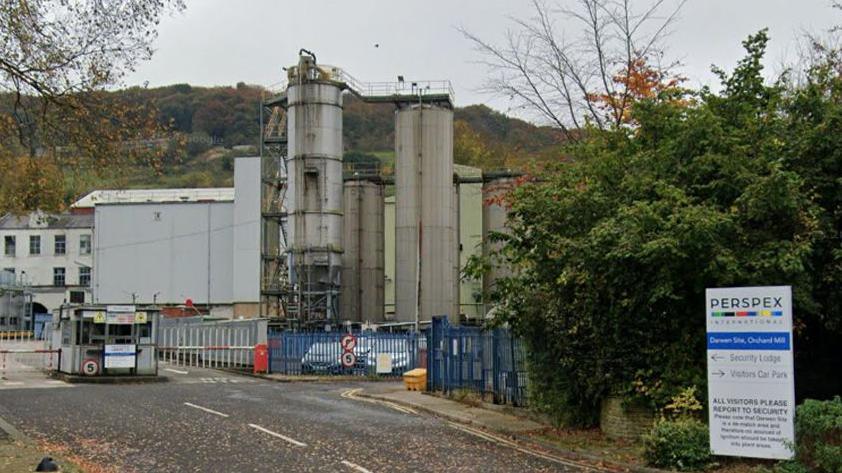Perspex plant demolition moves a step closer

The council is now considering an application for proposed demolition works
- Published
Planners have cleared the way for the demolition of a former Perspex plant in east Lancashire.
Blackburn with Darwen Council has told James Industrial Ltd an Environmental Impact Assessment (EIA) would not be needed at Orchard Mill in Darwen.
The authority is now considering a separate application from the firm for proposed demolition works of the industrial buildings on the 6.5 acre (2.6 hectare) Duckworth Street site prior to any redevelopment.
Production of Perspex - a clear acrylic sheet - began at the site in 1940 when the firm was part of ICI.
Job-creating investment
Perspex International vacated the complex as part of its relocation for the centralisation of its manufacturing operations at its Chapels Park hub in Darwen.
The firm's move is based around the creation of a new £40m Polymerisation Hall and Energy Centre at the main site off Goose House Lane – the first stage of a five-year job-creating investment programme in the town.
It then marketed the land of the now redundant industrial complex – which includes part of the original mill building – for redevelopment, the Local Democracy Reporting Service said.
A planning officer's report said the site "comprises of various commercial buildings, plant installations and areas of hardstanding".
It said: "The following non-designated heritage assets are recorded as lying within the boundary of the application: the former site of Orchard Commercial Mill – built 1844, demolished 1895 and replaced by new weaving sheds, also demolished 1961; Darwen Gasworks – late 19th Century, demolished 1967 and Livesey Fold calico printworks built in 1777, demolished prior to 1894.
"The proposed development involves the demolition of buildings alone and it would involve a significant deintensification of the site's usage.
"Therefore, it is unlikely that the environmental effects of the proposed development would be so significant to generate the need for an EIA."
Get in touch
Tell us which stories we should cover in Lancashire
Listen to the best of BBC Radio Lancashire on BBC Sounds and follow BBC Lancashire on Facebook, external, X, external and Instagram, external and watch BBC North West Tonight on BBC iPlayer.
Related topics
Related stories
- Published26 July 2024
